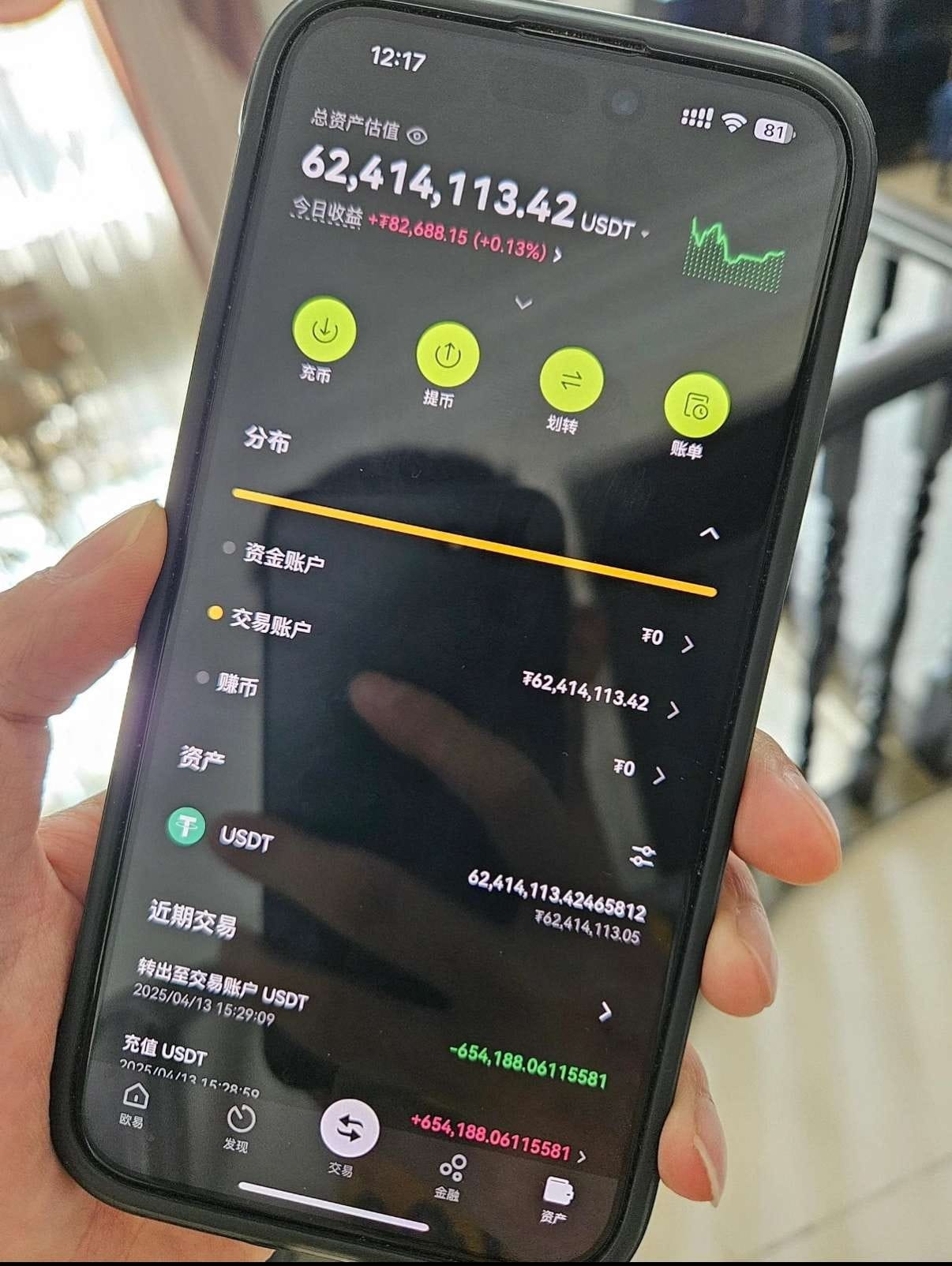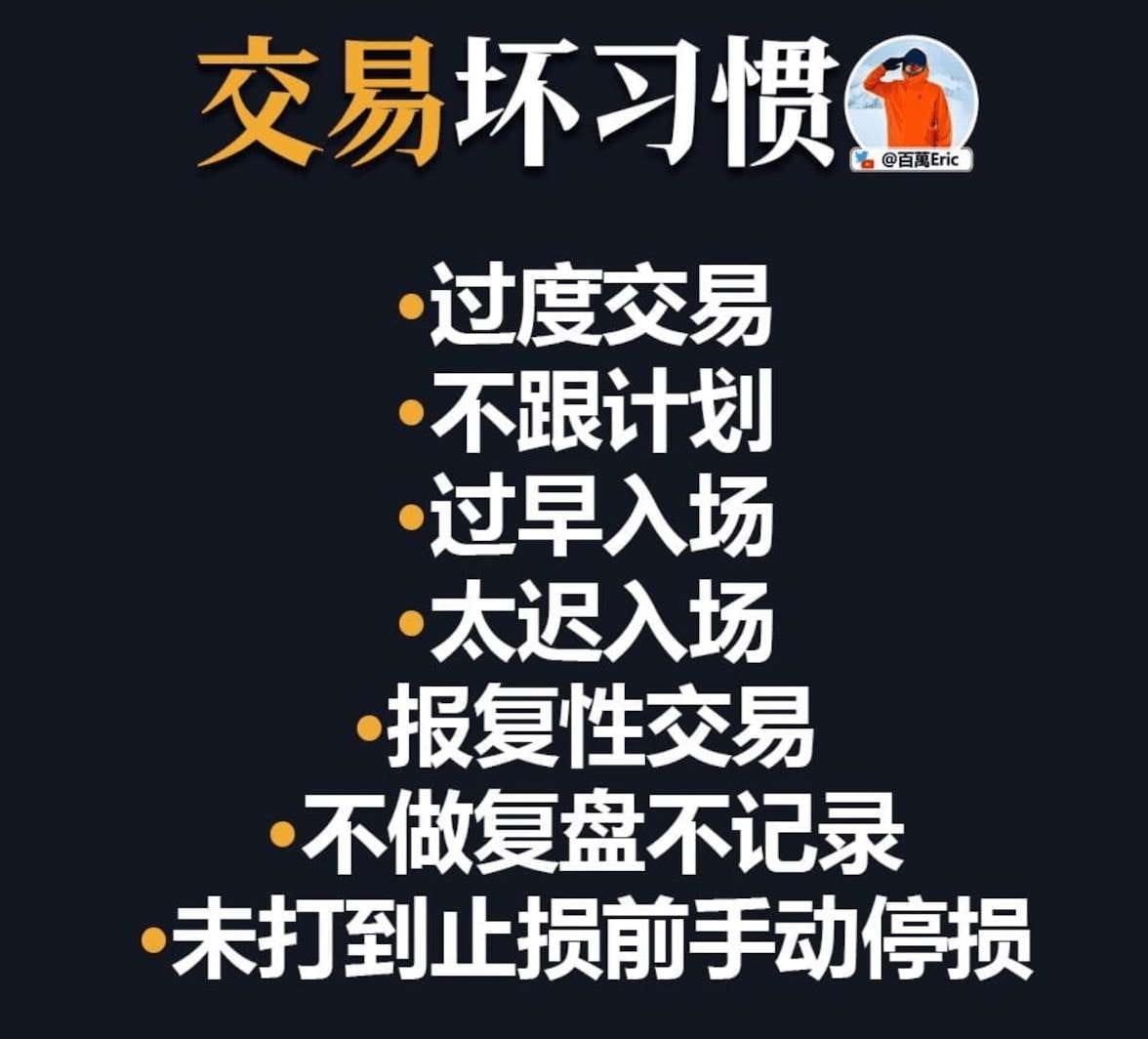Crypto practical experience: those who can keep their composure are the final winners!
I was born in 1988, not young anymore, and I have been in the crypto space for ten years.
When I say 'old,' it refers to both age and experience. Now in this circle, any post-90s individual casually has tens of millions in assets.
For example, Liang Xi, who in the circle doesn’t know him? During the 312 crash, he weathered the storm from two thousand to over ten million. Unfortunately, his gambling nature was too strong, and the ending is hard to describe.
I took a different path. I entered the market with 100,000 back in the day, and now my account exceeds ten million.
Not the fastest or the most aggressive, but I have more patience than most people. The crypto world is essentially an amusement park of emotions; most people are just aimlessly running with the crowd - either getting thrown off the ride or getting slapped in the face. But if you can keep your composure, this place is a treasure trove. To earn real money, I only stick to a few rules:
Do not be greedy for small profits, do not take life-threatening risks. It's easy to say, but 80% of people can't cross this hurdle in their lifetime. How many people opened a long position at 75,000, eager to take profits when it reached 76,000, only to watch it rise to 120,000 while they could only watch their big profits slip away; next time they stubbornly hold on, only to be forced to cut losses when it drops back down. Thus, they can never escape.
Choose mainstream coins that have dipped and are slowly recovering. Don't touch flashy new coins. Test with a small position first, and add slowly once stable. It's a clumsy method, but the most stable.
Trend must be established before averaging down. While others are eager to catch the bottom, I would rather wait until the direction is clear, even if it costs a bit more, it’s better than being caught in mid-air.
Every time the price rises, withdraw the principal and part of the profit. Let the rest fluctuate; when it's time, just leave, never be too greedy. Money in the pocket is real profit.

Having been in the crypto space for many years, I deeply understand that the core of profitability is not about accurately predicting the market, but about using iron rules to control my hands and protect the principal.
The following operational guidelines can help you reduce risk and achieve long-term stable profits!
1. Insure your position: refuse to go all in, use spare money to enter the market.

Each single coin's position should be ≤ 30% of total capital, high-risk altcoins ≤ 10%, to avoid significant losses caused by the volatility of a single asset.
Only invest with 'spare money that won't affect my life,' a stable mindset can avoid chaotic operations due to panic or greed.
2. Set 'red lines' for trading: pre-set take profits and stop losses, and stay out when unclear.

Before every trade, clarify your goals: for example, take profit in batches at a 20% increase, decisively exit at a 10% drop, and don't entertain the fantasy of 'waiting to break even' which will deplete your principal.
When the market is unclear or the trend is ambiguous, I’d rather stay out and observe than blindly buy due to 'fear of missing out,' which reduces the risk of ineffective trades.
3. Decouple from market emotions: do not chase hot trends, review and correct daily.

1. Don't follow 'insider news' or chase short-term trends; most 'positive news' is what others want you to see, avoid buying high.
Every day, spend 10 minutes reviewing: check if today's operations align with the plan? Did you enter due to impulse? Record errors to avoid repeating mistakes.
4. Deeply research a few targeted assets: fully understand 2-3 of them, focus on long-term logic.

Don't be greedy: rather than mess around with 100 coins, focus on 2-3 mainstream coins, and familiarize yourself with their fluctuation rhythms and capital flows.
Focus on the fundamentals of the project: pay attention to code updates, ecological progress, and regulatory dynamics, as these are the long-term core logic supporting prices, not short-term K-line fluctuations.
To put it plainly, the secret is three points, simple but must be executed earnestly:
First, never go all in, come in batches. I had suffered losses before going all in; more than 3000 U was reduced to half in just a few days. Later, I set a strict rule: before the market gives clear signals, I will only take a maximum of 20% of my capital to test the waters; when the trend stabilizes, for example, if the coin holds the 5-day moving average and the volume follows, I will slowly add positions. Many people go bankrupt not because the market is against them, but because they are too anxious, rushing in without waiting for signals, and can’t withstand fluctuations, ending up forced to cut losses.
Secondly, only add positions to profitable trades. In the past, I always thought of averaging down when losing, but the more I averaged down, the deeper I got stuck, losing all my principal. Later I changed this dead rule: for losing trades, I cut them at the stop-loss point, never averaging down; only for profitable trades, wait for it to rise above a 5% cushion before adding a little more. In simple terms, let profits roll their own profits, while the principal stays safely lying down, avoiding unnecessary risks; this way, my mindset becomes more stable.
Thirdly, go with the market trends, do not fight against the trend. 'Go with the flow' may sound clichéd, but I understood its importance after stepping into the pit of going against the trend. When the market is rising, I find coins that stabilize at the moving average; when the market breaks down, I stay out and wait for opportunities, never stubbornly trying to 'catch the bottom.' Many people say the market is difficult; in fact, the difficulty lies in their mindset — always thinking about going against the trend, either escaping too early or blindly trying to catch the bottom, naturally, they can't make money.

I used to be like countless young people with dreams of getting rich; I thought crypto contract trading was a fast track. As a result, reality hit me hard; with 30,000 as capital, within a month, through frequent chasing and selling, it shrank to a pitiful 8,000. That feeling was as if my name meant being drained of all essence, leaving only a mess. I slumped in my chair, looking at the red prompt of liquidation, feeling like a complete joke, foreshadowing my fate of being drained by the market.
I was down for several days and almost admitted defeat and exited. But I was unwilling. I began to frantically browse the posts of those true big shots, not looking for the 'wealth code' but observing how they 'survived.'
A phrase awakened me: 'Contracts are not a gamble on size; it's a probability game and a game of human nature. If you want to win, you must first learn to fear.'

Yeah, wasn't it because I wasn't afraid before? I didn't believe in evil, didn't admit defeat, and always thought I could win back the next round.
'Fear' is not cowardice; it's respect. I regained my composure and treated that 8,000 as the last spark, formulating a set of iron rules, etched in my mind:
Never go all in, never add dead weight: each time I open a position, it should not exceed 10% of the principal, and under no circumstances should I impulsively add to the position during losses.
Stop-loss is etched in my soul: always set a stop-loss when opening a position, losses must not exceed 2% of the principal, even if after the stop-loss the market immediately moves in the direction I anticipated, I will never regret it. Protecting the principal is the only way to have another chance.
Only eat the belly of the fish, not the tail: when the market is surging, I instead start taking profits in batches, never fantasizing about selling at the highest point. Eating most of the profit is enough; leave the remaining risk to others.
With this 'fear of death' strategy, my account began to undergo amazing changes.

I no longer pursue overnight wealth but am like a little hamster, slowly stocking up on food. When I make money, I withdraw part of the profit and never roll it all back in. I use the simplest 'compound interest' method; though slow, the direction is steadily upward.
I started to only trade the markets I understood. If there were no opportunities, I would stay out and wait patiently. I no longer watched over a dozen coins at once; instead, I focused on the one or two mainstream coins with the largest volatility that I was most familiar with. I no longer believed any 'insider news' from any 'teachers'; I only trusted my judgment and discipline.
Thus, during good market conditions, I made a big profit; during volatile times, I either made small profits or small losses, strictly controlling my drawdowns. 8,000, 15,000, 30,000, 50,000… after experiencing an initial sharp decline, my account balance began to rise at a slow but exceptionally resilient slope.
This process took far longer than I imagined, during which I experienced countless temptations and internal struggles, but I held onto that bottom line of 'fear.'

My contract trading method: 4 iron rules, control risk before talking about profit.
1. Fix the principal, lock in the risk.

I specifically use one account for contracts, with the principal always fixed (for example, 3000U), and never add more. I can lose this 3000U, but when the market goes right, I can earn tens of thousands of U - first calculate the 'worst-case scenario' so that I won't panic during trading.
2. Small amount to open a trade, earn a stable mindset first.

The first trade is always light, just a few dollars or ten bucks. Just like Livermore said, 'You have to profit from the start.' Even if the profit is small, it can stabilize your mindset and avoid losing control due to heavy losses right from the beginning.
3. Add to positions only after making profits, do not move when in loss.

Only when I have made money from the initial principal and see a clear trend will I use 'profits' to add positions; never add if I haven’t made money, and don’t average down when losing. The core is: protect the principal and use profits to seek greater returns, even if I lose, I won't feel distressed.
4. Flexible stop-loss, never let the principal get hurt.

I won't set a fixed stop-loss point; I will adjust according to real-time market conditions, but the bottom line is 'not to let the principal suffer major losses.' For instance, if the market is volatile, I will widen the stop-loss, and if the trend is against me, I will cut it immediately. With a stable mindset, I won't be scared away by the market.

That bear market drove me almost insane; I lost almost three million. Every day watching the market made my heart race, and at night I couldn't sleep, my eyes closed all I saw was my account dropping. I didn't want to post on social media, didn't want to reply to messages, and felt like my whole self had collapsed.
The most painful part is that no one can understand what you've been through. Family thinks you are gambling, friends start avoiding you, and you begin to doubt if you are a complete joke.
I almost admitted defeat, really.
Until I came across a phrase that said, 'No matter how much you lose, it’s just the beginning; clinging on is the end,' I was truly awakened by this saying.
Looking back at my previous operations, to be honest, they were all wrong. Reckless all-in, no stop-loss, following trends, gambling emotions, frequently switching coins… I wasn't trading at all; I was playing with my life.
When my account was left with only 3500U, I set a rule for myself: no more gambling. I would just follow the rhythm steadily, even if it was a bit slower, as long as I didn't blow up, there would be hope.
At that time, I began to roll my positions, dividing the principal into two parts: one for defense and one for attack, focusing on the few coins I knew best for short-term trades, with small targets, aiming for just 5% or 10%. If I made a profit, I would run; if I lost, I would cut it, without hesitation or nostalgia.
In the first week, it rose to over five thousand, in the second week over eight thousand, and by the sixth week, my account already had over forty thousand.
I still remember that night; I turned off the screen and did nothing, just sat there staring into space.
It's not happiness; it's that feeling of 'I really made it through,' which is too heart-wrenching.
To be honest, many people ask me how I rolled my capital and how I did it; I can't explain too much; first, the rhythm is too detailed, and second, even if I say it, not everyone will truly listen.
But I can tell you, turning around with small capital is really not a myth, as long as you can endure and change.
Opportunities from the market are always there; it just depends on whether you can refrain from being impulsive, soft-hearted, and fantasizing, and honestly work through it.

[From liquidation to stable profits: these 3 fatal habits must be cut off]
"This time is really different!"
It’s not just a slogan; it’s a transformation I earned with blood and tears...
The old me:
Adding positions during floating losses - the result is deeper entrapment.
Stop-loss is based on mood - end up losing everything.
Direction is based on guessing - always half a step behind the market.

Now I am:
Only add positions during floating profits - let profits run.
Counter-kill stop-loss - kill the losses in the cradle.
Focus on the mistaken market - pick up the bloodied chips of market panic.

For the first trade, I only used 10% of my capital, steadily earning 680U. It wasn't luck; I finally understood the language of the market.
Daily small profits + occasional big profits.
This is the sustainable profit model.
But the truth is:
99% of people would rather continue to gamble than change these three fatal habits. Are you also like this?
1. Crazy averaging down when in loss.
2. Hesitating when it comes to stop-loss.
3. Always think I'm going against the market.
I have gone through it all, which is why I dare to say:
Changing these three points is more useful than learning 100 technical indicators.
The market is specialized in treating:
When greedy → it tempts you to go all in and be buried.
In times of fear → a crash forces you to cut losses only to rebound.
Blindly following leads you to chase highs and become a big loser.

The ones who can truly make money are those who have honed the ability to go against human nature through countless moments of collapse - when the market is bustling, and the group chat is filled with shouts of 'all in,' they silently cash out; when the market drops to freezing point, and the news is filled with 'crash' headlines, they add to their positions, telling themselves 'this is the bottom.'
They execute trading plans as coldly as a program, using iron discipline to gradually grind a weak winning rate into a continuous profit.
When you can face the ups and downs directly, and the red and green fluctuations on the screen no longer make your heart race; when others panic and flee like headless flies during a market crash, and you can stand in the eye of the storm, calmly pulling the trigger through tears, this inner resilience and calmness are far more precious than any money.
The market always favors those lone wolves who stand firm in tears, but you must first endure the darkest nights, forging true courage from countless 'wanting to give up' moments, so that after the storm passes, you can stand in the sunlight and embrace your own victory.
[Final Act: The Battle Song Fades]:
"When the market closing bell rings, may these iron rules become your armor. Remember, trading is not a casino for overnight wealth, but the ultimate training ground for cognition and discipline. Only traders who engrave these iron rules into their DNA can survive the bulls and bears and become eternal survivors of the market."
